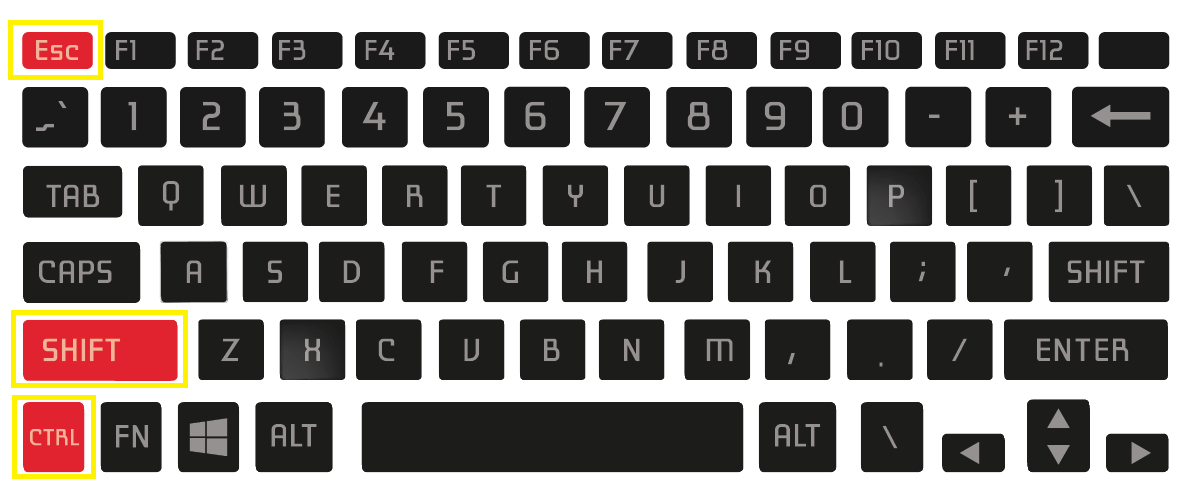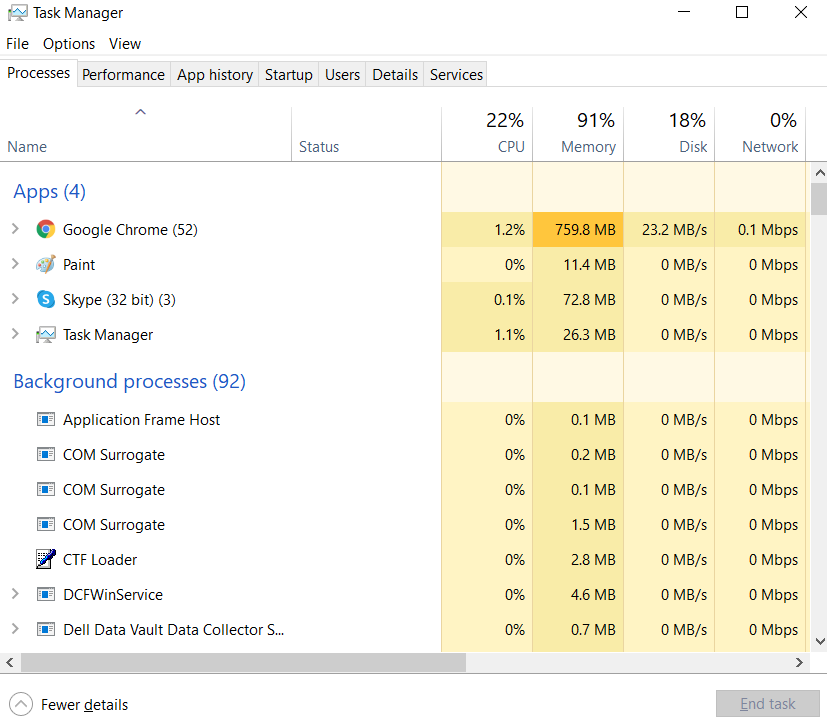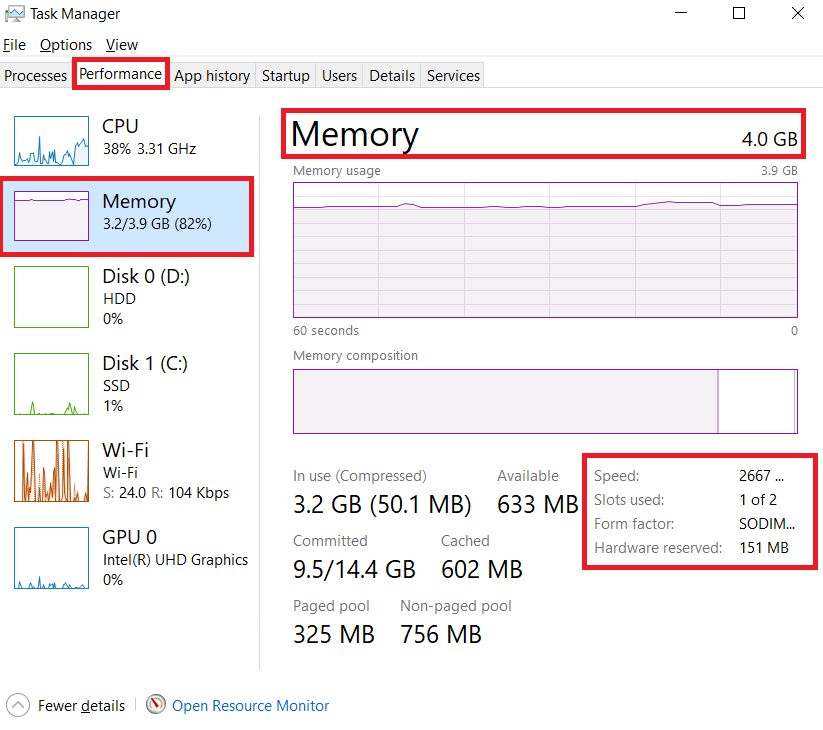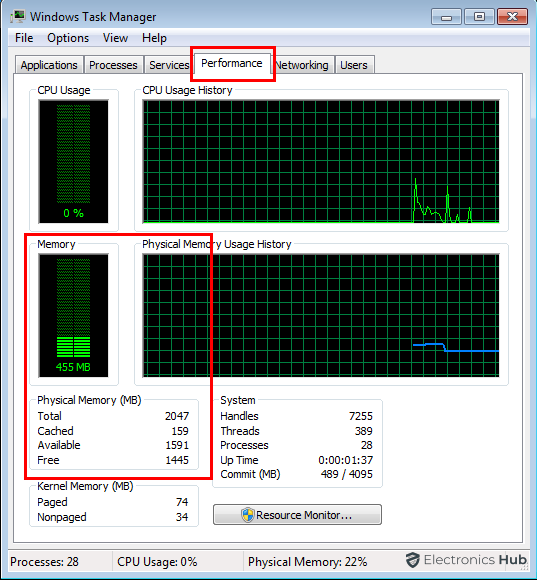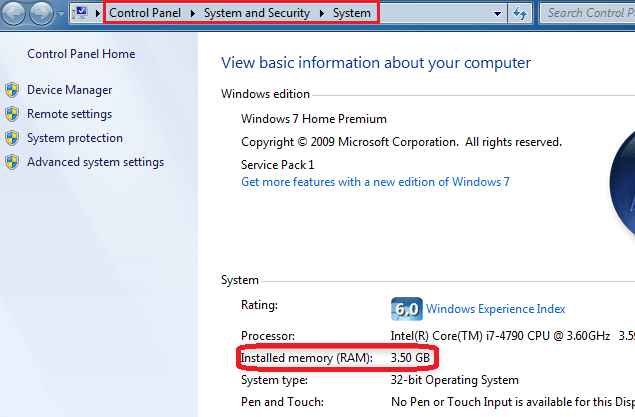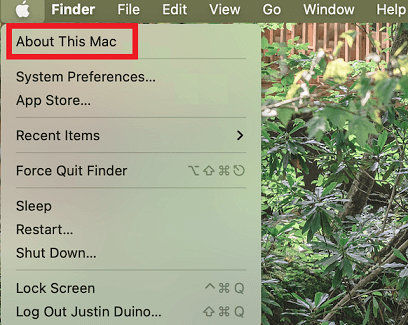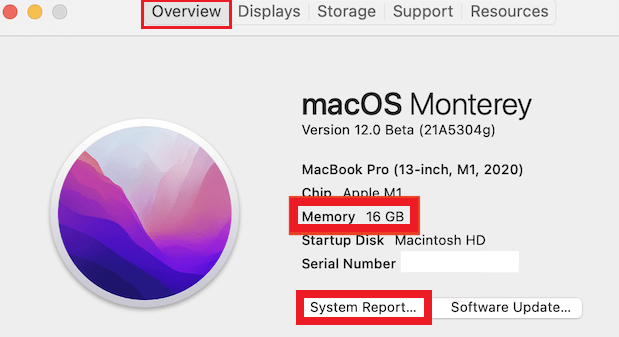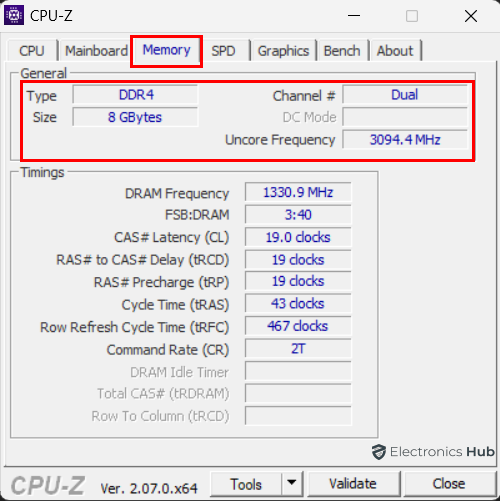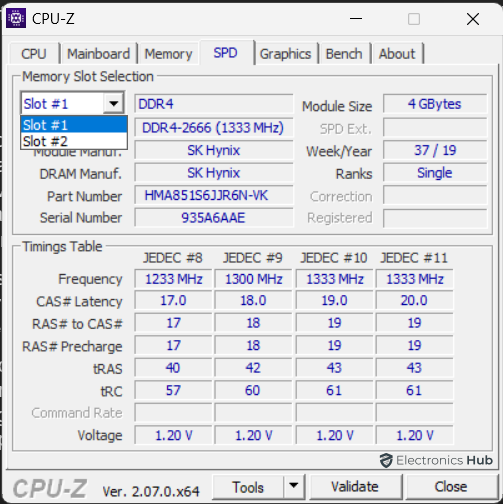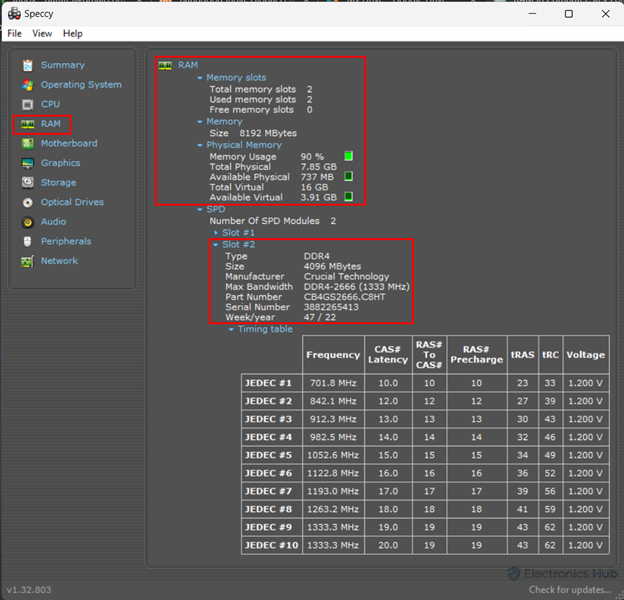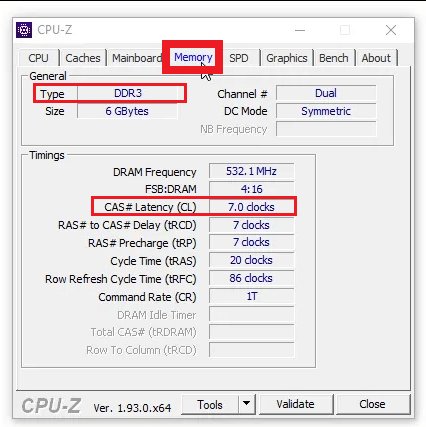Random Access Memory (RAM) is a crucial component of any computer system, serving as its short-term, high-speed memory storage. It plays a vital role in ensuring your computer’s smooth and efficient operation while running applications, opening files, and performing various tasks. Over time, with regular usage, we feel that our system is slowing down. One of the easiest ways to improve the performance of your system is to upgrade its RAM. But before that, you should be able to answer a couple of important questions; “What RAM Do I Have?”, “How to Check RAM in My System?”, and “How to Check RAM Speed?”.
In this guide, we will explore the importance of checking RAM and provide an overview of the methods and tools available to assess its capacity (size), clock speed, health and performance. Whether you are troubleshooting a computer problem or simply want to ensure your system runs at its best, understanding how to check RAM is a fundamental skill for any computer user.
Outline
ToggleWhat is RAM?
Random Access Memory (RAM) is a crucial component of a computer’s hardware architecture. It is a type of computer memory that plays a pivotal role in the operation, performance, and functionality of computers and other digital devices. It is a type of volatile memory that stores data that the computer is currently using or processing. RAM provides high-speed data access to the central processing unit (CPU) and plays a vital role in the overall performance of a computer. Here are some key points about computer memory (RAM).
- RAM is volatile memory, which means that it loses all its data when the computer is powered off or restarted. This is in contrast to non-volatile memory like hard drives or SSDs, which retain data even when the power is off.
- CPU uses RAM is to temporarily store data that it needs to access quickly. This includes data from running applications, the operating system, and any other processes that are currently active. RAM is much faster than other types of storage, such as hard drives or SSDs. This speed allows the CPU to access data stored in RAM quickly, which leads to improved overall system performance.
- The amount of RAM in a computer can vary widely, from a few gigabytes (GB) in budget laptops to several terabytes (TB) in high-end servers. The amount of RAM you need depends on the types of tasks you’ll be performing. More RAM is generally better for multitasking and running memory-intensive applications.
- DRAM (Dynamic RAM) is the most common type of RAM used in computers. It stores each bit of data in a separate capacitor within an integrated circuit. DRAM requires constant refreshing to maintain data, which is why it is called “dynamic.”
- SRAM (Static RAM) is faster and more expensive than DRAM but doesn’t require refreshing. It is often used in cache memory within the CPU.
- Many modern computers use dual-channel or quad-channel RAM configurations to improve memory bandwidth. This means they use two or four sticks of RAM, respectively, working together to provide faster data access.
- In most desktop and some laptop computers, users can upgrade or replace RAM relatively easily. This can be a cost-effective way to boost the performance of an aging computer.
Importance of RAM in Computers
Serving as the computer’s short-term memory, RAM acts as a high-speed data storage where the CPU can swiftly access and manipulate data. At its core, RAM functions as a dynamic workspace where data is temporarily stored for rapid access by the CPU. Its importance becomes apparent when considering multitasking. In today’s computing environment, users expect to effortlessly switch between various applications, and RAM plays a pivotal role in making this possible. With sufficient RAM, a computer can keep multiple programs open simultaneously, ensuring that they run smoothly without slowdowns. It allows for the quick retrieval and manipulation of data, resulting in a responsive and efficient user experience.
Beyond multitasking, RAM is essential for running memory-hungry software and handling large datasets. Applications like video editing, 3D rendering, and virtualization rely heavily on RAM to store and process substantial amounts of information. In gaming, RAM ensures that graphics-intensive games can load textures and assets swiftly, minimizing lag and optimizing frame rates. In essence, RAM acts as a bridge between the CPU and slower storage devices like hard drives or SSDs, providing the high-speed data access required for optimal performance in both everyday computing and resource-intensive tasks.
Moreover, RAM contributes to the stability and reliability of a computer system. When RAM is insufficient, the operating system resorts to using a portion of the hard drive or SSD as virtual memory, a much slower process. This can lead to performance bottlenecks and decreased system responsiveness. Therefore, having an adequate amount of RAM not only enhances performance but also prolongs the lifespan of a computer by reducing wear and tear on storage devices.
RAM’s significance in modern computers is undeniable, enabling multitasking, speeding up data access, supporting memory-intensive tasks, and ultimately delivering a smoother and more efficient computing experience.
Need to Check RAM
RAM is a critical component of your computer’s hardware that temporarily stores data that the CPU needs for processing. It serves as the working memory for your computer, allowing it to run applications and perform tasks efficiently. Checking RAM is essential for several reasons.
Insufficient or faulty RAM can significantly slow down your computer’s performance. By regularly checking RAM, you can identify issues that may be causing slowdowns or system crashes. Faulty RAM can lead to system crashes, application errors, and the infamous “Blue Screen of Death” (BSOD) on Windows systems. Checking RAM can help diagnose and prevent these issues.
RAM errors can corrupt data in transit, potentially leading to data loss or file corruption. By detecting and resolving RAM issues, you can ensure the integrity of your data. RAM is a vital hardware component, and its health can impact the overall longevity and reliability of your computer. Regular checks can help identify when it’s time to replace or upgrade your RAM.
How to Check RAM?
Using Built-in Tools
Windows 10/11
Now that you’ve understood what RAM is and its importance, let us dive into how you can check the characteristics of the RAM. As the RAM is one of the primary components in your computer, you will be able to check its properties pretty easily on a Windows computer. Here’s how you can check the RAM capacity on a Windows 10/11 Computer.
The Task Manager on Windows 10 and 11 is pretty helpful and offers a lot more information compared to previous versions of the OS. To open it, simply press the “Ctrl + Shift + Esc” keys in order.
Alternatively, you can also right-click on an empty space on the Windows Taskbar present at the bottom of your screen and select the “Task Manager” option from the list. If that does not work for any reason, you can also search for “Task Manager” in the Windows search bar and open the first result.
Depending on individual systems (especially in Windows 10), you will either get a minimized-version or detailed-version of the Task Manager. If it is the latter, then you can proceed to the next step. But if it is the former, then you have to expand the Task Manager by clicking on the “More details” option present at the bottom of the window. Now, you will see a “Processes” tab where you can check all the active processes and tasks.
To check hardware parameters, head over to the “Performance” tab. Here, all major components of your computer are listed. Select the “Memory” option present in the left section. Now, you can check all parameters related to your RAM such as total RAM capacity of your system (on the top right), Memory usage, available RAM, number of RAM slots (and how of them are free), RAM Frequency, and many more.
There is also a graph that shows how much RAM is being used at the moment. This will give you an idea about whether you need more RAM capacity or not.
Windows 7
Here’s how you can check the RAM capacity on a Windows 7 Computer.
If you are still using Windows 7 OS (for some reason), you can still use its Task Manager to find the basic RAM information. The procedure is quite similar to what we saw earlier. Right click on the Windows Taskbar’s empty space and select “Task Manager”. Then click on the “Performance” tab in the top. This will show the Memory usage in a graph plot. Just below that, you can see the total Physical Memory and Available memory.
Here’s how you can check the RAM capacity on a Windows 7 Computer:
- For an alternative way to check RAM capacity in Windows 7, head over to the Windows 7 start menu and search “Control Panel” in the search bar. Open the control panel from the search results.
- In the control panel, look for “Systems and Security” options. Once you are there, access the “Systems” page.
- You can also right-click on “My computer” and select the “Properties” option to access this page.
- On this page, you will be able to get information about your OS as well as other computer hardware.
In the “System” section, you can check the RAM capacity mentioned in front of “Installed memory (RAM)”.
If you want to get more information about RAM, you can use renowned 3rd party software such as CPU-Z.
Mac Computers
Checking the RAM capacity in macOS is also pretty easy. There are a few MacBook and MacBook Pro models that allow you to upgrade the RAM capacity. But before that, you need to check the capacity and features of your RAM so that you can find the most compatible RAM module for your macOS laptop.
About This Mac
Click on the Apple icon on the top of your main screen.
This will open a menu that is pretty similar to that of a Windows start menu. Here, you need to select the “About This Mac” option.
- Once you select this option, it will open a new window where it will display the specifications of your macOS computer.
- In the “Overview” section, you will find the RAM capacity mentioned right below the chip.
- If you want to know more details about your RAM, check the “Systems Report” button at the bottom of this overview.
Now, simply choose the “Memory” option.
Once you do that, you will be able to see the capacity of the RAM, as well as the type of RAM, installed on your system.
Activity Monitor
There is another way you can check RAM in your Mac Machines. It is using the Activity Monitor application.
Go to Applications > Utilities > Activity Monitor. In the “Memory” tab, you can see various RAM statistics, including total memory, memory used, and memory pressure. This can help you monitor RAM usage in real-time.
Using Third-Party Software
While built-in tools are useful for basic RAM monitoring, third-party software can provide more comprehensive testing and diagnostics. Here are some popular third-party RAM checking tools.
CPU-Z
CPU-Z is a popular utility program for Windows that serves as an indispensable tool for obtaining a comprehensive overview of your computer’s hardware components, including RAM. To harness its capabilities, start by downloading and installing CPU-Z from its official website. Select the appropriate version corresponding to your Windows operating system (32-bit or 64-bit) and execute the installer.
Upon successful installation, launch CPU-Z by double-clicking its desktop shortcut or locating it in your Start menu. CPU-Z promptly displays a variety of tabs at the top of the window, each offering extensive hardware information.
For RAM specifics, navigate to the “Memory” tab within the CPU-Z interface. Here, you’ll discover a wealth of data pertaining to your computer’s RAM. This includes the RAM type (e.g., DDR4), the total RAM capacity, information regarding the memory channels in operation (single, dual, or quad-channel), the RAM frequency (measured in megahertz or MHz), and the CAS Latency (CL) values, which denote the memory access delay.
If you select In the SPD tab, you can even more details about individual memory sticks.
Speccy
Speccy, a powerful and free utility program for Windows, offers a comprehensive view of your computer’s hardware components, including the RAM. To begin, you’ll need to download Speccy from its official website and complete the installation process, which is user-friendly and straightforward.
After installing Speccy, launch the program by either double-clicking its desktop shortcut or searching for it in your Start menu. To access RAM information, navigate to the “RAM” category in the left-hand sidebar of the Speccy interface.
Here, you’ll find an array of crucial details about your RAM modules, such as the total RAM capacity (typically measured in gigabytes), the RAM type (e.g., DDR4), the memory channels in use (single, dual, or quad-channel, if supported), the RAM frequency (in megahertz), and the CAS Latency (CL) values, which signify the memory access delay.
How to Check RAM Speed (Clock/MHz)?
Knowing just the capacity of your RAM does not give an exact idea about its performance. In most cases, you will find a small capacity RAM performing better than a larger one with comparatively lower clock speed. The clock speed of a RAM is mentioned in the MHz unit which represents its operating speed. This definitely influences the performance of the RAM as the higher MHz rating ensures faster operating speed and loading times.
You should always prefer buying fast RAM, if you are buying a new one (provided your system supports it). New generation CPUs (especially AMD ones) are also heavily dependent upon the RAM speed. Thus, if you want to get the best performance from your CPU, you must have equally fast RAM. You can imagine how a slower RAM can bottleneck the processor as it cannot compensate for the CPU’s operating speed.
Another reason to check the RAM speed is to verify its compatibility with another module. If you are running a dual-channel RAM setup, both must have an identical capacity as well as clock speed for optimal performance.
If there is a mismatch in the RAM speeds, then both the RAM modules will operate at the speed of that RAM module with lower clock speed.
If you are not sure how fast your RAM is, worry not. We will offer you a detailed guide on checking various RAM parameters which will be helpful for you. Apart from checking the RAM speed, you can also check out other important factors such as CAS latency and overclocking features.
RAM Clock Speed
RAM clock speed, often referred to simply as “RAM Speed” or “Memory Speed,” is a critical specification of a computer’s RAM. It determines how quickly data can be read from or written to the RAM module. RAM speed is typically measured in megahertz (MHz) or gigahertz (GHz). To check the clock speed of RAM, follow these steps:
- Enter the Task Manager on your Windows computer.
- Now, go to the “Performance” tab from the top of the window (in Windows 10) or from the left (in Windows 11).
- Once you are here, you will see information related to various components such as CPU, GPU, Disk, and Memory. As we wish to check RAM parameters, click on the “Memory” option.
- Here, you can get all information about the RAM in your system. It includes capacity, speed, currently occupied capacity, slots, and much more.
- The speed of your RAM should be mentioned in the lower right section.
- Here, you can check the MHz rating of your RAM.
RAM CAS Latency
CAS latency, often abbreviated as CL, is a crucial specification when it comes to understanding the performance of RAM. It represents the delay, measured in clock cycles, between when the RAM receives a command to access data and when it begins delivering that data. A lower CAS latency indicates less delay and faster data retrieval, while a higher CAS latency means more delay and slightly slower data access.
CAS latency is one of several timing parameters that affect RAM performance, and it is typically represented as a series of numbers, such as “16-18-18-36.” Each number corresponds to a different timing parameter, with the first number (CAS latency) being the most significant. For instance, in the example “16-18-18-36,” the CAS latency is 16.
In practical terms, lower CAS latency values result in improved memory response times and can lead to better overall system performance, especially in applications that rely heavily on memory bandwidth, such as gaming and content creation. However, the real-world performance impact of CAS latency is often more noticeable when paired with high-speed RAM. When choosing RAM for your system, it is essential to strike a balance between CAS latency, RAM clock speed, and capacity, as these factors collectively influence your computer’s memory performance and overall responsiveness.
- The easiest method to check the CAS latency of your RAM is via 3rd party software. We will recommend using the CPU-Z tool as this is an all-inclusive option that offers information about other hardware components as well.
- If you haven’t installed CPU-Z in the previous section, then visit the official CPU-Z website and download the CPU-Z installer for your computer. Install the software with the help of the installer and once the installation is finished, launch the program.
- You will see a list of various hardware components installed on your computer along with their specifications.
- Navigate to the Memory tab to get info on your RAM.
- You will find all necessary information about your RAM mentioned here, along with the CAS latency (in the “Timings” section).
If you have multiple RAM modules installed on your computer, head over to the SPD section and switch between the RAM modules to check respective CAS Latency numbers.
Overclocking Capabilities
Overclocking RAM involves running the memory module at a clock speed or timing setting higher than what it is rated for by the manufacturer. The primary goal of overclocking RAM is to increase the memory’s performance, specifically its data transfer rate and bandwidth. Checking if your RAM supports overclocking depends on a few factors, including the type and model of your RAM, your motherboard’s compatibility, and your CPU’s memory controller capabilities.
- The first step is to identify the specific RAM modules you have. Check the packaging or documentation that came with your RAM or look for labels on the RAM modules themselves.
- Look for information such as the RAM’s clock speed (e.g., DDR4-3200), CAS latency (CL), and whether it is advertised as “XMP” (eXtreme Memory Profile) or “Overclocking Ready.” RAM modules marketed as “Overclocking Ready” are more likely to support overclocking.
- Enter your computer’s BIOS or UEFI settings during the boot-up process. The specific key to access these settings varies by motherboard manufacturer (common keys include F2, Del, or Esc).
- Once in the BIOS/UEFI, navigate to the section related to memory settings or advanced settings.
- Look for options related to memory overclocking, XMP, DOCP, or, EXPO profiles. These options allow you to enable and configure RAM overclocking settings.
How Much RAM Do I Need?
The amount of RAM you need for your computer depends on your specific use cases and the type of tasks you perform. Here are some general guidelines to help you determine how much RAM you should have.
- For everyday tasks like web browsing, using office applications (e.g., Microsoft Word, Excel), and checking email, 4GB to 8GB of RAM should suffice. This will provide a smooth and responsive experience for typical usage scenarios. We recommend at least 8GB of RAM irrespective of the usage.
- If you frequently run multiple applications simultaneously or work with several browser tabs open, 8GB to 16GB of RAM is recommended. This extra capacity allows your computer to handle multitasking without slowing down.
- Content creation tasks, such as photo and video editing, demand more RAM. For these activities, 16GB to 32GB of RAM or more is advisable, depending on the complexity of your projects.
- Gaming PCs benefit from having ample RAM, especially if you play modern, graphics-intensive games. 16GB of RAM is a good starting point for gaming, but some games may benefit from 32GB or more, especially if you want to stream while gaming or play games with high-resolution textures.
- Professional applications like 3D rendering, virtualization, and computer-aided design (CAD) software require a substantial amount of RAM. In these cases, 32GB or more may be necessary for optimal performance.
- Servers and workstations often require large amounts of RAM, depending on the specific tasks they are designed for. Servers used for web hosting, databases, or virtualization can benefit from 64GB or more of RAM.
- Consider future needs when deciding on RAM. If you plan to keep your computer for several years, it is a good idea to invest in more RAM than you currently need, as software and applications tend to become more resource-intensive over time.
- Keep in mind that the RAM requirements of your operating system can also impact your decision. For example, modern versions of Windows or macOS may consume a significant amount of RAM even when idle.
Ultimately, the right amount of RAM depends on your specific computing needs and budget. You have to strike a balance between having enough RAM to ensure smooth performance for your tasks and not overspending on excessive RAM that you may not fully utilize. Upgrading RAM is often one of the most cost-effective ways to improve a computer’s performance, so you can start with a reasonable amount and upgrade later if necessary.
Conclusion
RAM is one of the most essential components of your computer. Therefore, it is necessary to know each and every parameter of the RAM installed in your computer. This will let you understand the module and you can even get an idea about its expected performance. Also, this allows you to find the most compatible option for a replacement or RAM upgrade for your computer. If you are not sure about any factor mentioned in this guide, let us know in the comment section and we will offer you more info on the topic.
FAQs
How to check RAM in Windows 10?
Answer: To check your RAM in Windows 10, you can follow these steps. Right-click on the Windows Taskbar and select “Task Manager.” In the Task Manager window, go to the “Performance” tab. Under the “Memory” section, you’ll find information about your total installed RAM and its usage.
How do I check my RAM or speed?
Answer: To check your RAM speed in Windows 10, you can use the Task Manager. Right-click on the Windows Start menu and select “Task Manager.” In the Task Manager window, go to the “Performance” tab. Under the “Memory” section, you’ll see “Speed,” which indicates your RAM’s clock speed in megahertz (MHz).
What type of RAM do I have?
Answer: To determine the type of RAM you have (e.g., DDR3, DDR4), you can:
Open the “Task Manager” by right-clicking on the Windows Taskbar and selecting “Task Manager”. Under the “Memory” section, look for “DDR” followed by a number (e.g., DDR4, DDR5). This indicates your RAM type.
How do I know if my RAM is slow?
Answer: You can assess if your RAM is slow by observing system performance. Signs of slow RAM include frequent system slowdowns, applications taking a long time to load, and excessive disk activity. High RAM usage, close to your RAM’s capacity, can also lead to performance issues.
How do I know if my RAM is DDR3, DDR4, or DDR5?
Answer: You can determine your RAM type in Windows 10 by opening the “Task Manager” (right-click the Start menu, then select “Task Manager”). Go to the “Performance” tab. Under the “Memory” section, look for the “DDR” followed by the number (e.g., DDR3, DDR4, or DDR5) to identify your RAM type.
Why is DDR5 better than DDR4?
Answer: DDR5 offers several advantages over DDR4, including higher data transfer rates, increased bandwidth, and improved power efficiency. DDR5 also supports greater memory capacities and is designed for emerging technologies, making it a better choice for high-performance computing and future-proofing.
Is 2666 MHz RAM good?
Answer: A RAM speed of 2666 MHz is decent for most general computing tasks, including web browsing, office work, and light gaming. It strikes a good balance between performance and cost. However, for memory-intensive tasks like content creation or gaming, you might benefit from higher-speed RAM, such as 3200 MHz or 3600 MHz, if your system supports it.

